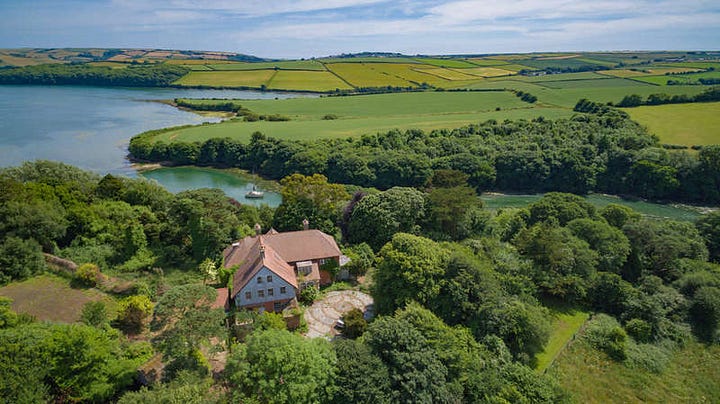Collapit Creek House, West Alvington

Back in 2018, when Collapit Creek House came on the market, Property With Potential wrote:
This grand house would make a wonderful family home or even a boutique B&B and whilst it does need modernisation, extensive renovation is not required.
Yet now the new owners wish to demolish it and replace it with a larger, modern, highly glazed replacement that the Parish Council considers 'more in keeping with small coastal towns that are not protected via the AONB or conservation areas/heritage coast.' It is an assessment with which the Society fully agrees.
But those are not the only reasons why the Society has objected to this application. We are also concerned that the proposed surface water and treated foul water outfall is more than 930 metres above the average low water mark at the time of spring tides, and is therefore in conflict with Rule 8 of the General Binding Rules. Similarly Rule 17 states you cannot meet the general binding rules if the discharge will be in or within 500 metres of biological sites of special scientific interest, special protection areas, special areas of conservation, Ramsar wetland sites, designated bathing water or protected shellfish water.
Consequently it is impossible to see how the Environment Agency could issue a permit for this proposal.
We also remained concerned that tree clearance has continued and that the demolition of buildings is recorded as being bad for the environment.
In other words, and as we made clear in our objection, this application should be refused.
And the good news is, it was. The case officer concluded:
The proposed development, by virtue of its form and design, fails to respect the area’s distinctive sense of place, and to reinforce local distinctiveness, and would have adverse effects upon the character of the area and which would detract from the special qualities of the South Devon National Landscape and the Undeveloped Coast policy area.
She was also concerned the proposed dwelling would be much larger than the original dwelling, with an increase in floor area of approximately 103%. Given the identified landscape harm, this was considered a significant increase. There was also a high risk of long-term harm to valued trees through construction or post constructional pressure for inappropriate works that would diminish their amenity contributions.
